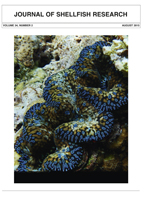A significant pathogen of crustaceans is thought to be Hematodinium. Much is known about the ecology and the effects of this disease on the sustainability of crustacean populations, but significantly less is known about the mode of transmission and fate of infected animals. Attempts have been made to transmit the disease under aquarium conditions to several species of crabs. These studies have shown a great deal of variation in the resulting levels of mortality and the timescale of disease progression. To determine if Hematodinium infections are the significant drivers of mortality in juvenile edible crabs (Cancer pagurus), crabs were injected with either 1 × 105 trophonts from an infected animal or sterile saline. Crabs were bled every 4 wk to determine the progression of infection and its effect on the total number of circulatory hemocytes. Thirty-three percent of the Hematodinium-injected crabs became infected and mortality occurred between 93 and 378 days postchallenge. Infected crabs appeared to molt less frequently than their uninfected counterparts. Both Hematodinium-infected and uninfected crabs exhibited infections by a number of other disease-causing agents including mikrocytid parasites, the fungus, Ophiocordyceps, and unidentified bacteria. These latter agents appear to be the key drivers of the mortality observed in both the Hematodinium infected and uninfected crabs.
How to translate text using browser tools
1 August 2015
Effects of Experimental Infection of Juvenile Edible Crabs Cancer pagurus with the Parasitic Dinoflagellate Hematodinium sp.
Amanda L. Smith,
Andrew F. Rowley
ACCESS THE FULL ARTICLE

Journal of Shellfish Research
Vol. 34 • No. 2
August 2015
Vol. 34 • No. 2
August 2015
Cancer pagurus
dinoflagellate
edible crab
Hematodinium
Hemocytes




